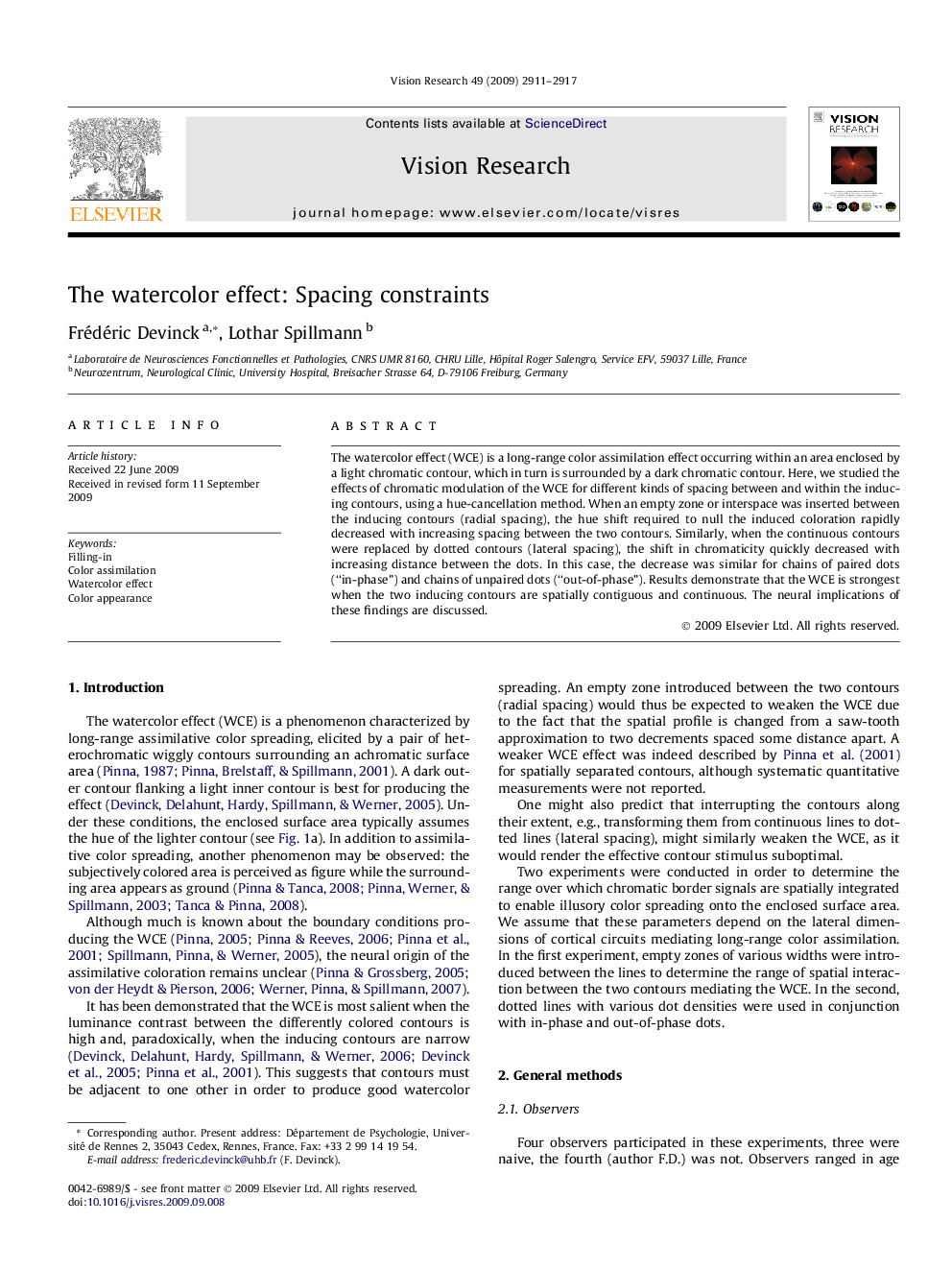| Article ID | Journal | Published Year | Pages | File Type |
|---|---|---|---|---|
| 4034612 | Vision Research | 2009 | 7 Pages |
The watercolor effect (WCE) is a long-range color assimilation effect occurring within an area enclosed by a light chromatic contour, which in turn is surrounded by a dark chromatic contour. Here, we studied the effects of chromatic modulation of the WCE for different kinds of spacing between and within the inducing contours, using a hue-cancellation method. When an empty zone or interspace was inserted between the inducing contours (radial spacing), the hue shift required to null the induced coloration rapidly decreased with increasing spacing between the two contours. Similarly, when the continuous contours were replaced by dotted contours (lateral spacing), the shift in chromaticity quickly decreased with increasing distance between the dots. In this case, the decrease was similar for chains of paired dots (“in-phase”) and chains of unpaired dots (“out-of-phase”). Results demonstrate that the WCE is strongest when the two inducing contours are spatially contiguous and continuous. The neural implications of these findings are discussed.
